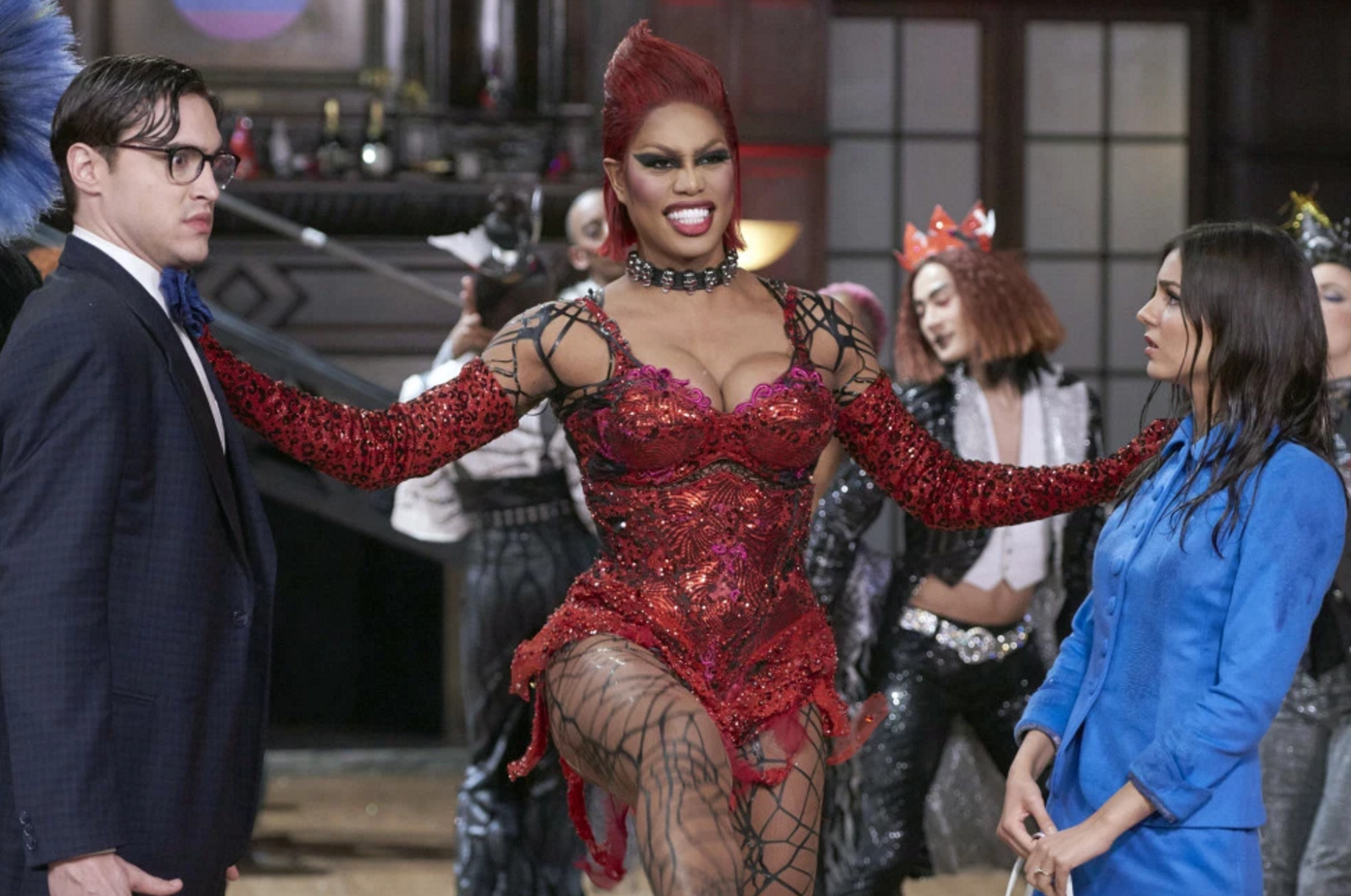'Rocky Horror Picture Show' Review: Is It Worth Doing the Time Warp Again?

Hanna Schwinn ’19 / Emertainment Monthly Staff Writer
Was it worth doing the time warp again?
FOX’s adaptation of The Rocky Horror Picture Show isn’t just “a jump to the left” from the original. It’s yet another TV musical remake airing on primetime.
The story revolves around a young, newly engaged couple, Brad (Ryan McCartan) and Janet (Victoria Justice), whose car breaks down in the rain. They seek help in a nearby castle, discovering that it is occupied by strangers in elaborate costumes celebrating an annual convention. The head of the household is Dr. Frank-N-Furter (Laverne Cox), a self-described “sweet transvestite” (and in terms of appearance, a transgender woman) and apparent mad scientist with a simple-minded strongman in her laboratory, the title character Rocky (Staz Nair). Throughout the story, Brad and Janet become glamazon prisoners of the evil doctor, until they are released to go home with the help of Dr. Frank-N-Furter’s minions.
It’s a fun, if poorly written, story. But the point of Rocky Horror is not to go for the story, but for the music. A version of Rocky Horror’s origin story goes like this: Rocky Horror started as a play, written by Richard O’Brien. He and his friend, Jim Sharman (later the director of the film), had an opportunity to do a play at the Royal Court in London for three weeks. He just wanted to have fun with his next production, and O’Brien wanted to be known for writing music. Out comes a gothic-themed, schlock-horror comic-book fantasy romp, with less focus on the story, but irresistible tunes. Audiences were rolling on the floor in laughter. And so Rocky Horror continued on past those three weeks—it’s been in production in at least one location all over the world since its premiere in 1973.
The 1975 film was also supposed to be just a bit of fun. Sharman and O’Brien tried their hand at making film audiences laugh as well. They were probably completely surprised when Rocky Horror became a cult classic.

The remake decided to bring this counterpoint-dialogue to the screen, taking the TV audience momentarily out the story to show a darkened theater, and a faux audience member shouting, “Get an umbrella, Janet!” But it didn’t replace the camp value, or make it cute. It stole the most iconic role of Rocky Horror – being an audience member – from the actual audience.
Usually, being self-aware is an admirable trait of remakes, or entertainment that pulls heavily from tropes (see the TV show Galavant for a brilliant example of this) but here, it was just annoying. Whereas the 1975 version was campy due to its clean, low-budget appearance—a nod to the B-movies of the 1950s—there was no pretending that the director, Kenny Ortega (best known for the High School Musical trilogy), was aiming for camp.
At various points in promoting Rocky Horror, Ortega and the cast members insisted that the most important part of bringing Rocky Horror to the screen again was a desire to have fun, just like the original Rocky Horror team did. The general consensus is that they think they had a lot of fun. And with the costumes, the makeup, the production design. . .who wouldn’t?

The dance numbers too were very well thought out, which wouldn’t be a complaint for any other musical, but this is Rocky Horror, and after too much stylization, the production lost itself.
In remaking Rocky Horror with a high budget, you lose what make it unique. You lose its historical value in bringing camp style to the big screen. And, apparently, you lose its audience by replacing them with actors.
To its credit, however, is Ortega’s magic touch with music. The soundtrack has been updated with new, addictive versions (especially “Touch-a, Touch-a, Touch-a, Touch Me” and “Hot Patootie – Bless My Soul”). So, kudos to autotune.